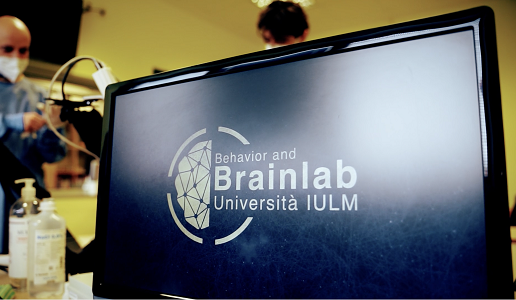Cork perceived as an element of quality

A research conducted by the Behavior and Brainlab of the Iulm University of Milan, conducted through neuroscientific techniques, demonstrates the importance of the role of cork in increasing the perceived quality of the wine tasted, both from an irrational and rational point of view.
The promotion campaign in support of cork, promoted and supported by APCOR (Portuguese Cork Association) and, for Italy, by ASSOIMBALLAGGI - Federlegno/Arredo, leads to new and interesting results and confirms the CENTRALITY OF Cork IN INCREASING THE PERCEIVED QUALITY OF WINE TASTED. The APCOR project was born as an extension of an experiment conducted by the IULM Behavior and BrainLab in Milan in 2018 and expanded in 2022. The ultimate goal was to demonstrate how the wine experience can be modified through prior information provided to tasters and can lead even the most experienced to a completely different evaluation of the same product. The research center's innovative methodology was not based solely and exclusively on rational evaluation, but primarily on emotional and cognitive experience analyzed through neuroscientific techniques. The purpose of the research was to analyze the perceived differences between a wine that was believed to come from a bottle closed with a cork versus a wine that was believed to come from a bottle closed with a screw cap. The wine was the same and composed of 50 percent wine from a bottle with a cork closure and 50 percent wine from a bottle with a screw cap. The 40 participants were divided by gender and age groups, but also by wine expertise. Fifty percent of the sample were experts, and the remaining 50 percent were regular wine drinkers without specific expertise.
Risults
 The researchers first leveraged the power of emotional experience, starting with sound. Two audios were played, one clearly referable to the typical opening of a bottle with a cork, the second to the opening of a screw cap. During the listening phase, the stimulus related to the opening of a bottle with a cork finds a better performance: cognitive engagement is 39% higher than for the screw cap, and emotional activation also follows the same trend, being 64% higher. In both subsequent phases, olfactory experience and tasting, the results remain consistent with those of the initial listening phase. During the olfactory experience, wine thought to come from a corked bottle achieves 34% higher cognitive engagement while emotional activation is 59% higher than that of screwcap. In the tasting phase when participants believe they are drinking wine from the corked bottle they show 80% higher cognitive engagement than those who believe they are tasting wine from the screwcap bottle. In addition, participants show 238% higher emotional activation when convinced that they are tasting wine from bottle with cork. Finally, overall, the corked bottle is rated better (in terms of quality, intensity of knowing, and pleasantness) when the subject is convinced that they are tasting wine from a corked bottle. In fact, participants estimate a cost of €7.69 for wine with cork so €1.44 more than screwcap (+16%) and are willing to pay €7.78 per bottle so €1.21 than screwcap (+18.5%).
The researchers first leveraged the power of emotional experience, starting with sound. Two audios were played, one clearly referable to the typical opening of a bottle with a cork, the second to the opening of a screw cap. During the listening phase, the stimulus related to the opening of a bottle with a cork finds a better performance: cognitive engagement is 39% higher than for the screw cap, and emotional activation also follows the same trend, being 64% higher. In both subsequent phases, olfactory experience and tasting, the results remain consistent with those of the initial listening phase. During the olfactory experience, wine thought to come from a corked bottle achieves 34% higher cognitive engagement while emotional activation is 59% higher than that of screwcap. In the tasting phase when participants believe they are drinking wine from the corked bottle they show 80% higher cognitive engagement than those who believe they are tasting wine from the screwcap bottle. In addition, participants show 238% higher emotional activation when convinced that they are tasting wine from bottle with cork. Finally, overall, the corked bottle is rated better (in terms of quality, intensity of knowing, and pleasantness) when the subject is convinced that they are tasting wine from a corked bottle. In fact, participants estimate a cost of €7.69 for wine with cork so €1.44 more than screwcap (+16%) and are willing to pay €7.78 per bottle so €1.21 than screwcap (+18.5%).
Regarding the stage inherent in label analysis, specifically of 3 different vignettes containing information related to the type of cork (plastic, cork, and screwcap) it emerges that the label with the vignette related to cork is displayed more than the others, by 90% of the participants, thus 10% more than plastic and screwcap.
What emerged overall from the research marks a markedly important step on the great effectiveness of cork in making wine perceived from an irrational and rational point of view as being of higher quality, and offers valuable indications for the future and the evolution of approach in relation to this truly unique material in the world, known for its extraordinary characteristics from the environmental point of view as well as for being part of a supply chain that is pursuing an important path of innovation and enhancement from the point of view of production and production processes.
Perceptual analysis using the Eye Tracker was also included as an analysis methodology, which tracked and monitored participants' visual pathways on the bottles providing qualitative and quantitative feedback. The results showed that the visibility of the vignette depends largely on the attractiveness of the graphic part (cap image).

 Italiano
Italiano







